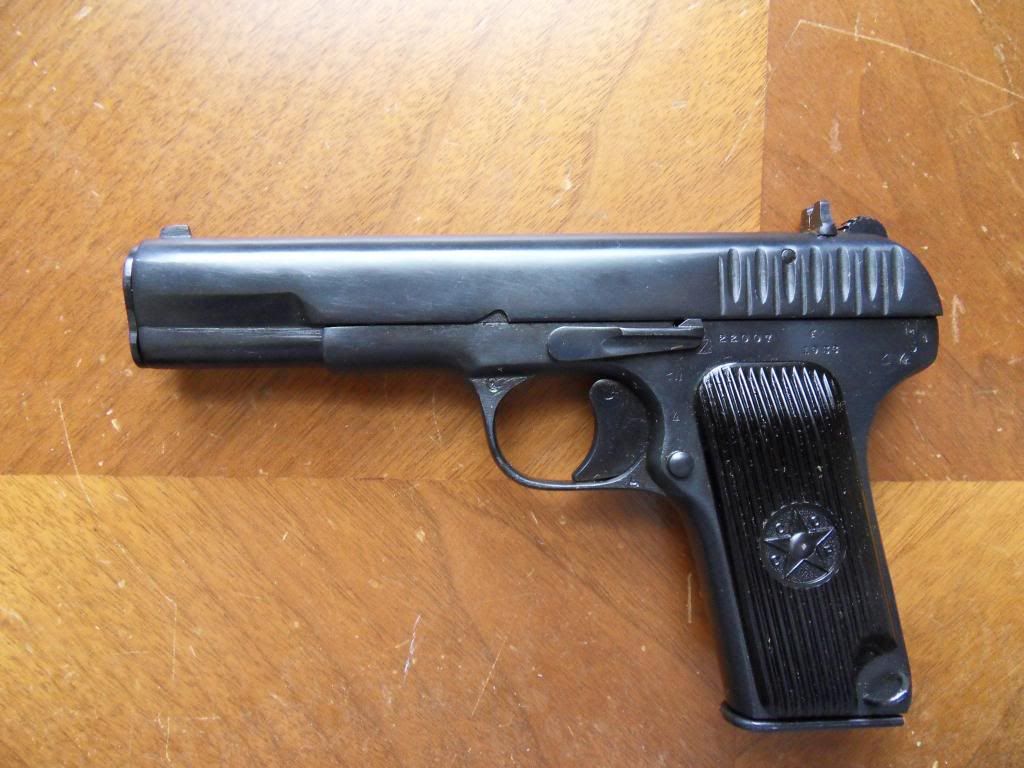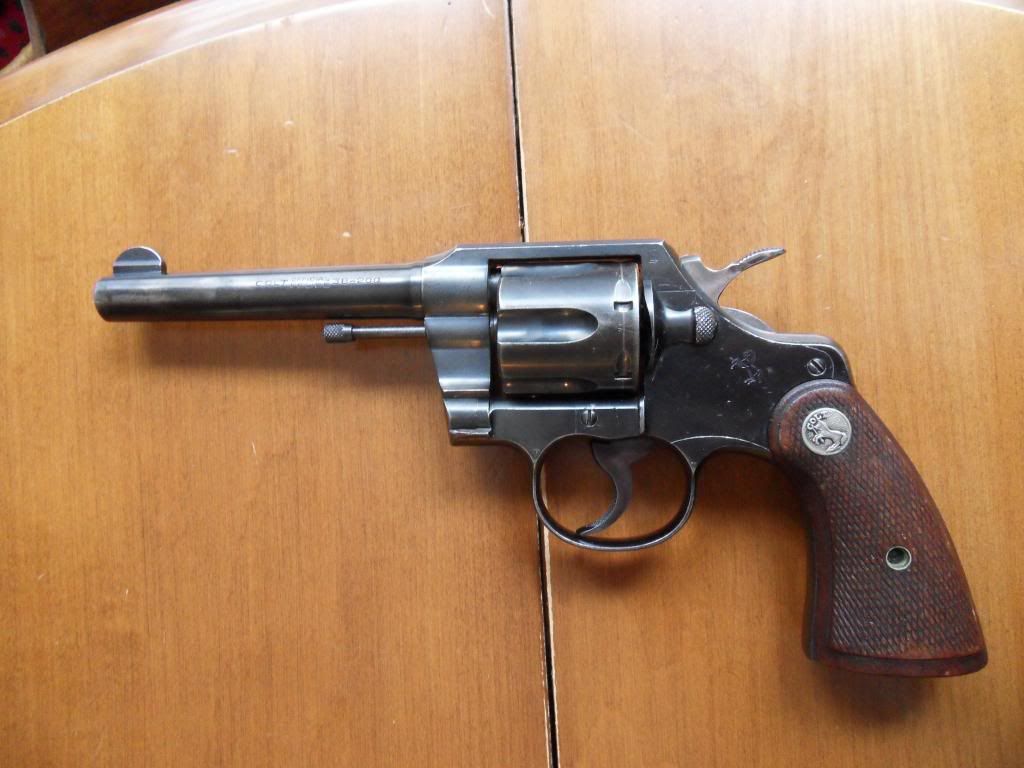
 |
|
#31
|
|||
|
|||
|
Just received a very early production Soviet Tokarev TT-33, made at Tula in 1936 - actually the first full year of production on the TT-33, as they were still making TT-30s up until 1935. It's a refurb, but all matching serial numbers (the barrel is a force-matched replacement) including two mags and a postwar-made M1935 leather holster. The holster is a bonus as these almost always come with 1950s post-war rubberized canvas economy models. I'm very happy to have got this, I has missed the boat on the initial import of Soviet TT-33s to Canada and there were only post-war models left on the market, so to get a good deal on a pre-war example is just a bonus!
 I also finally managed to track down some correct period grips for my British contract Colt Official Police - so it finally actually looks like a collectible! 
Last edited by Nyles; 03-06-2013 at 10:26 PM. |
|
#32
|
|||
|
|||
|
Does the Tokarev make you want to walk around and call people "Comrade..."
__________________
I like to think, that before that Navy SEAL double tapped bin Laden in the head, he kicked him, so that we could truly say we put a boot in his ass. |
|
#33
|
|||
|
|||
|
I like that TT-33. Glad to see that you located some Colt medallion walnut grips for your British contract OP. Looks good. I'm still hoping to one day purchase the British OP that my department has locked away in evidence. Considering that the suspect who had it with him has been in prison for the past five years there is no reason for the Colt to still be locked awway. Case is ajudicated. No owner has been located. But bureaucracy moves with the speed of a thundering herd of turtles at times.
|
|
#34
|
||||
|
||||
|
"Soviet Migraines" for everyone!
|
|
#35
|
|||
|
|||
|
Bureaucracy sounds about right - I once waited almost a year for the Canadian firearms program to de-register my Chamelot-Delvigne that someone called a .45 Colt... ugh.
Got some good stuff from the postman today! It's a very WW1 sort of week in the guntorium... First, I got a very nice Italian Carcano M91 Fucile, made at Terni in 1918, to replace my very not nice 1897 M91. This one is in really good shape, all matching and isn't missing the cleaning rod. Great example of a WW1 Italian rifle - too bad it was made too late to see much of the war, and it cost 3 times as much as the other one, but the other one was so rough I only ever bought it as a place holder. I still think the Carcano is a really under-rated rifle, they're not very prettily finished and the action isn't smooth, but they shoot surprisingly accurately with the gain-twist rifling and are really very practical battle rifles.  I also got a very nice 1916-dated German S98/05 "butcher" bayonet to go on my Gewehr 98. This is a very impressive, very heavy 15" blade to mount on the end of a 50" rifle. These were called "butcher" bayonets because the very broad blade resembled a butcher's knife. These were also made with a saw-toothed back for issue to engineers and machine gun troops for cutting brush, however most of these were either thrown away or had the teeth ground off because they inflicted horrific wounds and the Allies started summarily executing anyone caught carrying one! 
|
|
#36
|
|||
|
|||
|
Neat! Love the sites on the Carcanco.
__________________
I like to think, that before that Navy SEAL double tapped bin Laden in the head, he kicked him, so that we could truly say we put a boot in his ass. |
|
#37
|
|||
|
|||
|
Yeah, they're quite neat. A spring loaded button the left pushes the leaf aside so you can move it, when released it locks it into grooves on the base corresponding to your various ranges. There's even a cutout on the handguard so you can flip it all the way down and expose a fixed battle sight on the base, which is an unusualy large notch - put the blade at the top of the notch and it's good for 200M, at the bottom 100M. The later M38 series operated with just the fixed sight, which I think is plenty good enough for most combat ranges!
|
|
#38
|
|||
|
|||
|
Cool. That system seems very similar to the sights on the, and I'm gonna botch this, the Vitterelli rifles.
__________________
I like to think, that before that Navy SEAL double tapped bin Laden in the head, he kicked him, so that we could truly say we put a boot in his ass. |
|
#39
|
|||
|
|||
|
That's absolutely where it came from. The Swiss came out with the Vetterli with a tube magazine in 1869, and then Italians adopted them in a single-shot version in 1870 (followed up by the Vetterli-Vitali with box magazine in 1887). When the Italians came out with the Carcano they just used the same system of sights their soldiers were familiar with. Interestingly, due to rifle shortages, in 1915 the Italians actually reissued Vetterlis converted to 6.5mm with a Carcano-type magazine to rear-echelon troops. I'm actually planning on picking one up soon-ish, though I have other priorities at the moment since they're not actually safe to shoot!
|
|
#40
|
|||
|
|||
|
Hey!
That explains what Great-Grandpa was doing with a convertered Vetterli-Vitali. I knew the gun was a war bring back but couldn't figure out why it wasn't in 10mm Rimmed or whatever the heck it was originally chambered in. Neat gun, cleaning rod included.
__________________
I like to think, that before that Navy SEAL double tapped bin Laden in the head, he kicked him, so that we could truly say we put a boot in his ass. |
 |
|
|